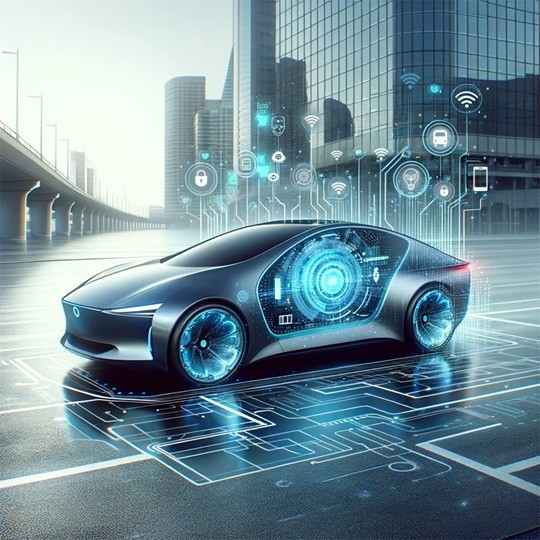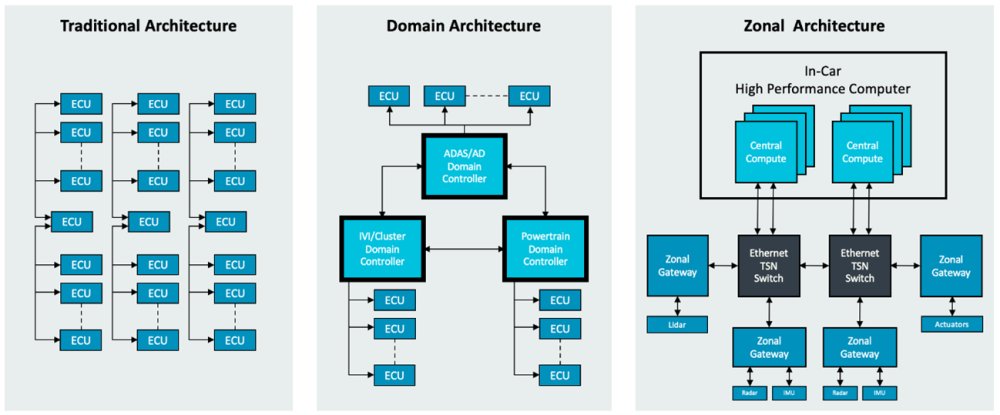Software-Defined Vehicles (SDVs): revolutionizing the automotive industry

Over the past decade, the automotive industry has undergone a radical transformation, driven primarily by unprecedented technological advances and changing consumer expectations. At the heart of this transformation is the concept of software-defined vehicles (SDVs), a paradigm that reimagines vehicles not only as means of transport, but as advanced technology platforms that are largely defined and controlled by software. This evolution marks a turning point in how we interact with vehicles, how they integrate into the urban ecosystem, and how automotive design and manufacturing are conceptualized.
In a nutshell, SDVs are vehicles whose features, performance, and user experience are fundamentally defined by software, rather than solely by their hardware components. This philosophy (which you may recognize as something we already do with our smartphones) allows the same hardware to serve multiple purposes or setups through software modifications, enabling an unprecedented level of flexibility and customization through over-the-air (OTA) updates. This means that a vehicle’s characteristics can evolve long after it has left the showroom floor, offering a dynamic and customizable driving experience.
SDVs are revolutionizing the entire automotive industry and its ecosystems. Car manufacturers can access new business models and revenue streams by offering software subscriptions, updates, and digital services, providing ongoing value to customers and opening up new markets. To do this, automakers will need to rethink the way they operate, from their human resources (with a greater emphasis on software engineering) to their manufacturing (which needs to be adapted to assembling vehicles that are essentially complex technological platforms). On the customer side, this change also affects user-vehicle interaction, enabling more intuitive, customizable, and updatable interfaces, transforming the vehicle into a personalized assistant where the user experience can be enriched and tailored to individual needs.
The rise of SDVs is also reshaping the role of suppliers. Traditional automotive suppliers, focused on manufacturing physical components, are now being asked to pivot towards software development and digital services. This transition is fostering new partnerships between automakers, technology companies, and startups, blurring the lines between the automotive and technology sectors and breaking down silos between links in the value chain.

From an engineering perspective, the shift to SDVs has profound implications for vehicle architecture and technology. Traditional vehicle design, with multiple electronic control units (ECUs) for different functions, is giving way to a more flexible, software-centric approach using centralized computing platforms and zonal ECUs. This allows computing resources to be centralized, reducing the complexity (especially in terms of wiring) and cost associated with multiple ECUs.
Moreover, SDVs are driving the adoption of cutting-edge technologies such as artificial intelligence (AI), machine learning, and cloud computing in the automotive sector. These technologies enable advanced features such as predictive maintenance, autonomous driving, and real-time traffic and weather updates, enhancing safety and the overall driving experience.

In terms of cybersecurity, while the SDV approach brings new challenges (expanded attack surface, complexity and integration challenges, data privacy concerns, etc.), it also provides the tools and capabilities to address these challenges (continuous updates and patches, advanced cybersecurity measures, collaboration and information sharing, etc.), offering the potential for safer, more secure vehicles.
In conclusion, the transition to software-defined vehicles represents a significant leap forward for the automotive industry, with the promise of safer, more efficient and more enjoyable transportation. As vehicles become more software-centric, the opportunities for innovation and differentiation become boundless. Automakers and suppliers must embrace this shift, adapting their strategies and business models to thrive in the new automotive landscape.
For companies like GMV, this evolution presents a unique opportunity to leverage our expertise in software development, cybersecurity, and systems integration to help automakers build better SDVs. By partnering with them, GMV is called to play a pivotal role in shaping the future of mobility, delivering solutions that enhance vehicle functionality, improve safety, and elevate the driving experience. GMV embodies the key characteristics that an SDV partner should have: software expertise and innovativeness, cybersecurity competence, flexibility and scalability, quality and reliability, OTA update capabilities, compliance with standards and regulations, a collaborative mindset, commitment to sustainability, and long-term support and maintenance.
Author: Carlos Busnadiego